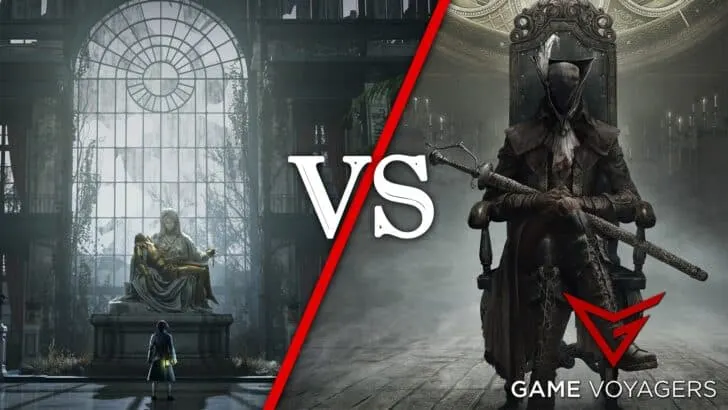Whenever a developer adds “Soul-like” to their game, they have to live up to the exemplary works of FromSoftware. The same goes for Lies of P, a game heavily inspired by the likes of Bloodborne. Of course, they put their own mix into the formula to make it stand out. What are the things that these two games share and differ in, let us find out.
Lies of P is more like an amalgamation of Bloodborne and Sekiro. It checks almost all the boxes quite expertly of a signature FromSoftware game. You can expect the same, if not more, challenging difficulty, boss fights, interconnected worlds, and gameplay/combat execution. Lies of P is amongst the top runner-ups, worthy of the Soul-like genre.
What are the Setting differences?
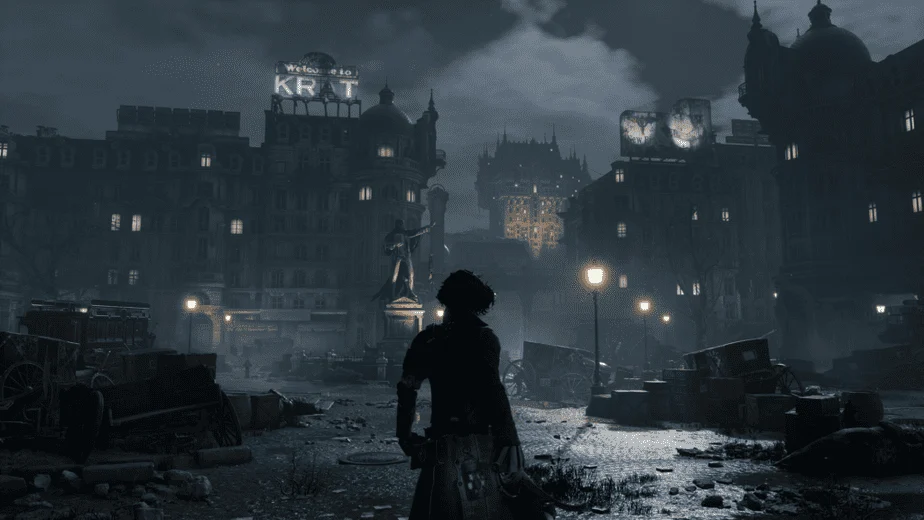
Lies of P’s Krat and Bloodborne’s Yharnam share similarities in the era they are set in. This is evident in both the cities sharing gothic Victorian structures and a relentless night engulfing these once great metropolises, giving them a melancholic coating.
Bloodborne is set in the early stages of the technological advancements of mankind, whereas Lies of P is smack dab in the middle of the tech revolution. This is shown through the robots or puppets roaming the streets, and lights sprinkled all over the city, highlighting its many magnificence.
How does the Narrative differ?
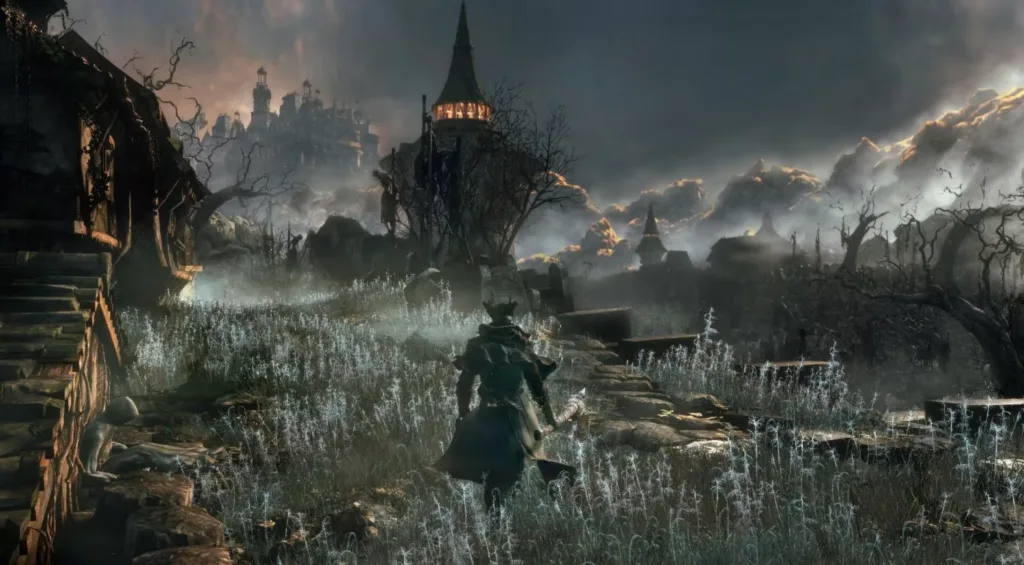
The backdrop or the events that lead to the point where you join the game in both these games are very different yet familiar. Both worlds have been turned upside down by the advent of a mysterious “sickness”. Inhabitants of both these worlds have become twisted and are ready to rip anyone who seems normal.
In Bloodborne, a mysterious blood disease turns humans into grotesque monsters, and you as a Hunter must plow through to get answers in this nightmarish hellscape. The game boasts a theme of Lovecraftian cosmic horror, where unknown alien entities are influencing the world and transforming it into their nauseating image.
On the other hand, the sickness in Lies of P stems from the “frenzy” that’s affecting the puppets, robots designed to cater to humans, to go berserk and kill their owners. P or Pinocchio is the only puppet who has survived this infliction.
The game is based on the children’s fairy tale Pinocchio by Carlo Collodi. Most of the faces you meet in the game are renditions of the iconic characters in the story like Gemini the talking cricket who lives in the lantern you carry and provides exposition along the way.
The story in Lies of P is far more linear. Characters will provide an explanation and point you to your next objective. Whereas Bloodborne’s story delivery is more lore-based where you have to stitch together what actually happened to this place.
Set Character vs. Character Creator
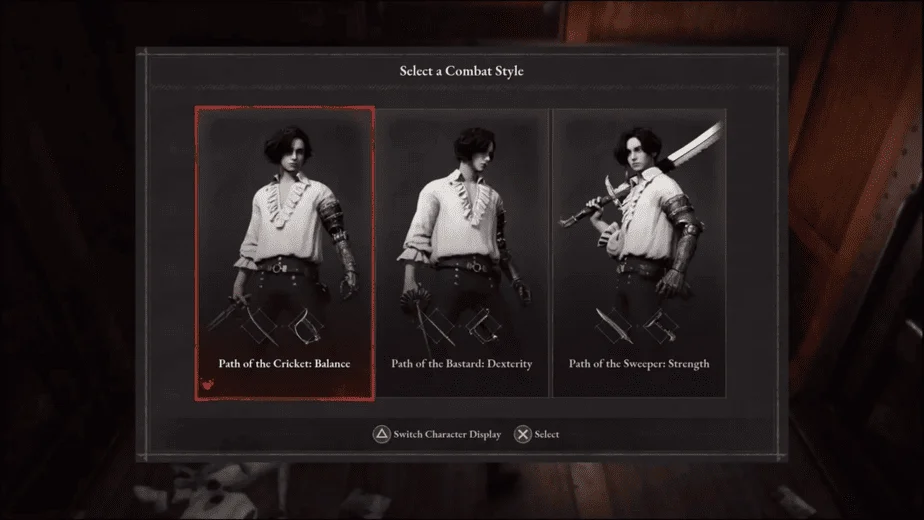
Bloodborne follows in the footsteps of its other Soul-like counterparts where you have to create your character from scratch. The player has all the freedom to customize the character’s look to its starting stat allocation.
The player character is flat and silent, there is no personality to them. You are just a vessel to trigger the game’s event and nothing more. There are a few choices here and there, but they are far from deep.
Lies of P is centered around Pinocchio, an unusual puppet created by Geppetto. He is a predetermined character who is still pretty lifeless, but there is a story behind him, and he interacts with the world around him.
Much like the fable, he deep down wants to become a human, and with that comes nuances that give him more personality than From’s protagonist.
P is the only robot in all of Krat that can lie, which is not possible for the other puppets in this universe. Although his nose doesn’t grow, P can lie, and that is part of the gameplay. There will be choices along the way where he could choose to lie like a human or tell the truth like a puppet to NPCs.
Depending on the choices, P will start behaving either more like a puppet or a human as you progress. This also has major implications for the ending.
A neat little detail in the game is when you start to lie more and more, P’s movement gets more fluid like a human’s, as opposed to the mechanical way he started off with. There is depth to P, to say the least, just don’t expect award-winning characterization.
Which game is more Difficult?

Soul-like genre is known for its difficulty. Even a lowly grunt can make quick work of you if you take them lightly.
Bloodborne for some is one of the hardest FromSoft games, but for others, it is very accessible. The lightfooted combat design and more focus on offense than defense make things much more manageable, at least for me.
However, the game is no slouch in terms of challenge. The bosses and regular enemies do favor strategic gameplay and punish those who consider it a hack-and-slash.
Lies of P rivals the hardest of Soul-like games out there. The game is uncompromising in its difficulty, putting many Souls fans off with its testing hardship.
You are expected to not only rely on dodging but block attacks as well and use everything in your arsenal to tactfully take down enemies, especially the bosses.
Main World Design Differences

FromSoftware’s world design is unparalleled. The way the game’s different areas connect to each other boggles the mind. You never know which door you open next, and it turns out to be a shortcut to a previously completed level. The worlds are linked to each other both horizontally and vertically in a mesmerizing manner.
The same applies to Bloodborne. Not only are the worlds joined together, but there are multiple secret areas that are totally missable like Nightmare Frontier. These usually require convoluted steps to uncover, and you definitely don’t want to miss out on them.
Lies of P has the first aspect of this peculiar world design covered very competently. This game’s world and areas are also well-connected, dotted with shortcuts that make exploration so much fun. There are secrets, but none are as detailed as Bloodborne.
However, the game does fail at the other secret area element. You are not rewarded with huge spaces that are entirely optional. There are no moments of stumbling into an unknown location if you go off the beaten path. This game is far more linear than other FromSoft products.
Robots vs. Monsters
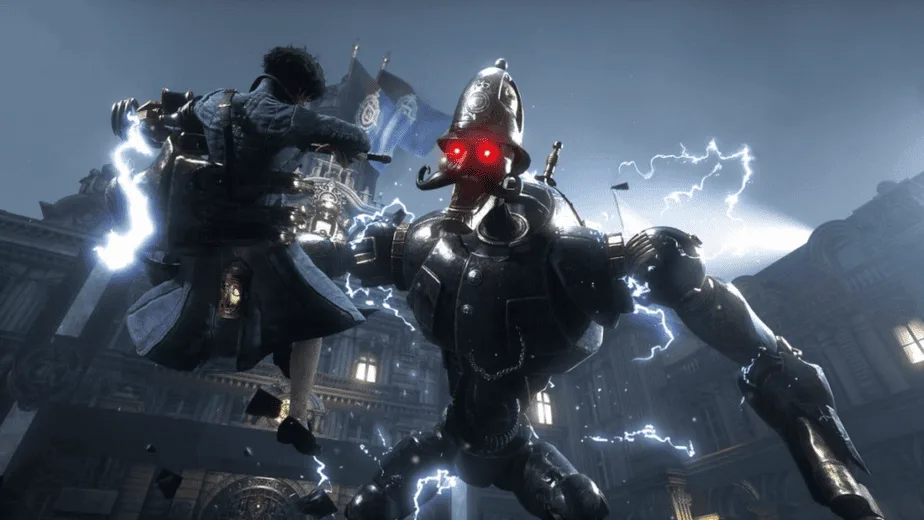
One of the selling points of Lies of P is the unique take on robotic enemies or puppets. You being a puppet yourself, have to face a sort of automaton uprising. These mechanical monstrosities are a sight to admire in themselves.
The puppets twitch and move like a machine would, and even their attacks are very mechanical. Their designs are by far their strongest suit. Round 8 Studios has done an excellent job representing this vision.
Bloodborne, technically, has your standard monster enemies but it doesn’t mean they are any less by any stretch of the word.
FromSoftware has skillfully captured what would a monster look like in a world corrupted by cosmic influence. The enemy design here is top-notch but does resemble other From games.
Trick Weapons vs. Weapon Customization
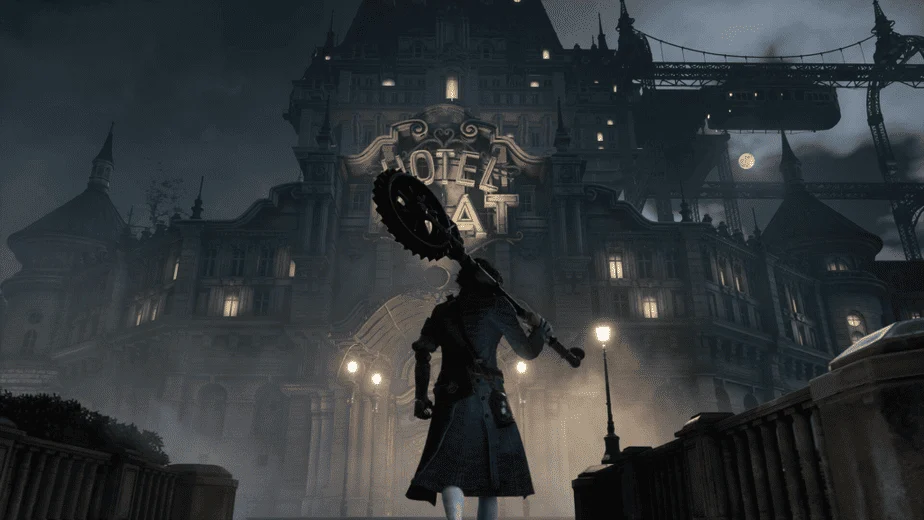
FromSoftware came up with this cooky idea of transforming trick weapons in Bloodborne. Every weapon in the game can change its form on the fly by a press of a button. This small addition added heaps of intricacies to each weapon in the game.
Not only is it visually pleasing, like switching a sword into a hammer, but this transformation adds tons of attack and combo variety. This was my personal favorite bit about this game.
Lies of P didn’t try to imitate Bloodborne in this aspect, although some weapons can transform. Instead, they opted for a weapon customization mechanic, a first in the world of Soul-like. Every standard weapon is broken down into two pieces, the hilt/handle and the blade. You can potentially put any blade onto any other weapon’s handle.
This feature completely changes how a weapon works. You can put a hammer on top of a rapier handle, and it will become a fast-thrusting weapon. The combinations are seemingly endless with the assortment of weapons in the game. However, you can not change them on the go. You can only customize weapons at the “bonfire”.
On top of that, every weapon in Lies of P comes packed with unique special attacks in the form of Fable Arts.
You build up a meter over time in combat that allows you to unleash these lethal moves that are pretty cool looking. The variety of these attacks is insane and ranges from basic buffs to full-on special combos.
The Legion Arm adds even more ways to fight

Round 8 took a page from Sekiro’s book and added its own take on the Prosthetic Tool called Legion Arm. This is an interchangeable arm that can be equipped with diverse arms with their distinct abilities. For example, there is one that turns your hand into a cannon and another that places mines on the ground.
This inclusion elevates the build assortment in the game and forces players to look for new ways of using these effectively in battle. The only downside here is that you can’t cycle through these Legion Arms on the go, like in Sekiro. You have to equip and commit to a single arm until you can change it from the next Stargazer.
No such mechanic exists in Bloodborne!
Defense vs. Offense

Bloodborne is essentially the only Soul-like game that completely dismissed blocking in combat. The game forces you to be aggressive and rely on dodges primarily to escape incoming attacks. The game does provide another defensive measure with the addition of guns.
They are not for sniping enemies from afar but firing them right when the enemy’s attack is about to hit you to parry them. This will disrupt their combos and open them up for a devastating critical strike.
The game’s aggressive approach is further heightened by the Rally mechanic. Whenever an enemy deals damage, a portion of the lost health can be recovered if you immediately start attacking the enemy before it fades away.
Lies of P stick true to their roots where blocking is present and is very crucial to its combat. You are expected to block attacks, unlike other Soul-like where you can rely on dodging most of the time. Much like Sekiro, blocking and parrying at the right time is very important.
There is a poise system in place here as well where perfect blocks will fill up an enemy’s stagger meter and open the window for a critical strike once it fills up.
P also has a type of Rally mechanic. Whenever you block an attack, not only does the stamina go down but a small chunk of HP is removed. This particular chunk can be replenished in time if you attack the enemy.
Healing items vs. Pulse Charges

Lies of P has the standard Soul-like trope of healing using Astus Flasks or in this case Pulse Cells. These healing items are in limited numbers so you can not blatantly use them.
The Pulse Cells are only replenished when interacting with the Stargazers, the bonfire of this game. You can increase their quantity as you progress through the game.
Round 8 put their own, and much welcomed, spin on this healing formula. As soon as you run out of Pulse Cells, there will be a meter on the item’s icon that fills up as you land hits and block attacks.
When fully filled, it will grant you a free Pulse Cell to heal. This allows players to continue their adventuring without panicking to find the next Stargazer in order to refill Pulse Cells.
Bloodborne went the other route of collecting healing i.e. Blood Vials from dead enemies. From the get-go, you have a generous supply of Blood Vials and keep on accumulating them from the mobs that roam Yharnam.
This mechanic is a double-edged sword. On one hand, you have tons of healing at your disposal and can acquire them along your journey. On the other hand, their unreplenishable nature forces you to farm.
In instances where your stock of Blood Vials runs out, you will be forced to dispatch basic enemies to stockpile a comfortable number of healing items before you can return to exploring uncharted locations.
Skills or P-Organ
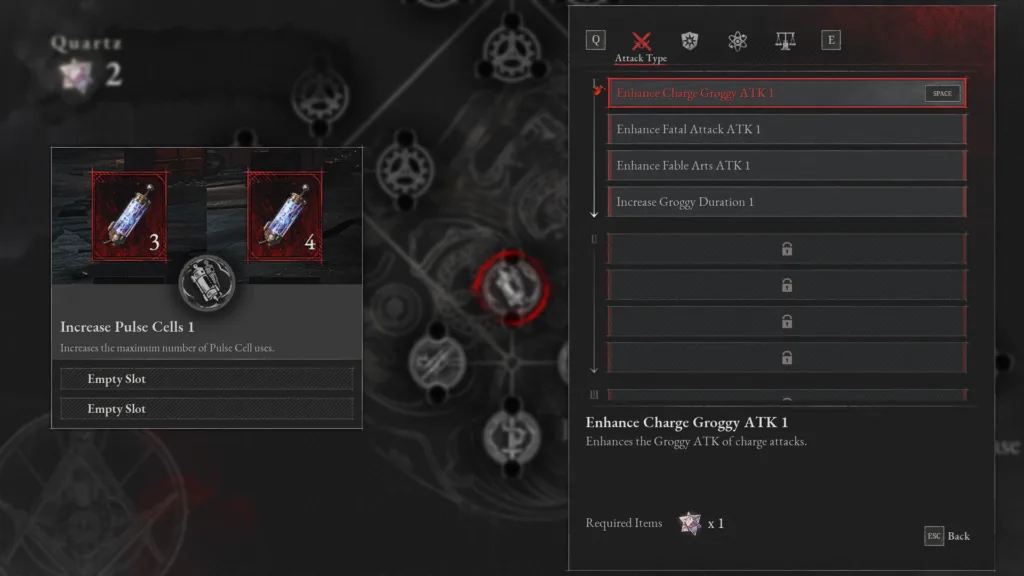
Upgrading in Souls-like usually boils down to investing your hard-earned souls in particular stats like strength or dexterity. The same applies to Bloodborne where you invest in stats that best compliment your playstyle and weapon of choice.
Lies of P has a similar approach to leveling up, but there is an added layer of skills known as P-Organs. You eventually unlock a skill tree that grants passive and active abilities to P. They require a special currency called Quartz to unlock.
Only a few abilities can be equipped at any given time, expanding the build variety in the game.
Lies of P is imitation at its best. This game has enough of its own personality to stand on its own feet and break the mold of homogenous soul-like that flooded gaming in recent history. Bloodborne is a masterpiece for what it is, but Lies of P has mastery in so many different facets that it deserves respect on its own merit.

